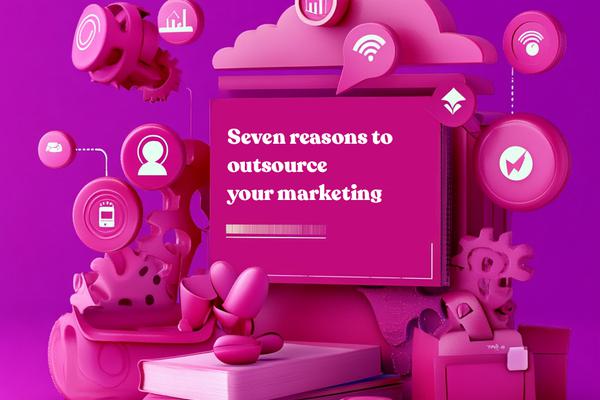Disruptive marketing – challenging the status quo
Written by Amy Shaw
In the build-up to the 2024 Olympics, Nike released a controversial video advertisement with the headline ‘Winning isn’t for everyone’ - a bold statement that dives into the raw, unfiltered drive necessary to be the best.
This article has been assigned the following categories: Marketing,

The narrator asks,
"Am I a bad person?...I'm single-minded. I'm deceptive. I'm obsessive. I'm selfish. Does that make me a bad person?...I have no empathy. I don't respect you. I'm never satisfied. I have an obsession with power...I'm irrational. I have zero remorse. I have no sense of compassion. I'm delusional. I'm maniacal. You think I'm a bad person? Tell me.”
These words, which could easily describe a villain, are juxtaposed with clips of athletes pushing their limits, making it clear that such traits are often the bedrock of their success.
Nike’s campaign has certainly stirred the pot, challenging viewers to rethink what it means to be a champion. The idea was to spark conversations, and it did. While some people praised the advertisement, others commented that it promotes poor sportsmanship and is against the spirit of the Olympic games.
From my perspective of competing in Division 1 athletics in the US collegiate system, I understand that becoming a top athlete requires a level of dedication which can border obsession.
However, because our team was sponsored by Nike, I learnt more about the brand and its historically inclusive messaging. Nike’s co-founder, Bill Bowerman, said “If you have a body, you are an athlete” which seems in conflict with the highly cut-throat nature of this recent advertisement.
This is disruptive marketing in its finest form. But what is disruptive marketing, and why does it work?
Disruptive marketing
Disruptive marketing is a strategy that aims to challenge the status quo and redefine conventional marketing practices. It involves using experimental tactics by introducing innovative and unexpected methods to capture the attention of consumers.
Disruptive marketers are constantly testing daring, new tactics that haven’t been tried before. It can involve leveraging new technologies, unconventional channels, and creative messaging to break through the noise and create a memorable impact.
Why does it work?
This approach not only differentiates a brand from its competitors but also engages the target audience in a more profound and meaningful way.
Disruptive marketing seeks to shift consumer perceptions and behaviours, often by addressing unmet needs or presenting products and services in a novel light, thereby generating buzz and fostering brand loyalty.
From Steven Bartlett (2024),
“Great advertising doesn’t aim for universal approval; great brands know that you have to STAND FOR something if you want to create a cult following. They also realise that the minute you stand for something, you are automatically STANDING AGAINST something else. If you want to build a brand, you have to piss off 80% of people to connect with your 20%.”
Disruptive marketing is not new
Between the ninth and twelfth centuries, merchant traders organised the first trade fairs, breaking away from the tradition of trading based solely on personal connections.
In 1440, Johannes Gutenberg introduced the first printing press, enabling businesses to advertise in locally distributed newsletters. These advertisements marked the early instances of disruptive marketing.
Marketing disruption progressed gradually until the 1990s, as brands generally adopted a cautious approach to advertising. However, with the advent of the digital era, it began to explode.
Why disruptive marketing is important today
Disruptive marketing has become essential in today's advertising landscape, where consumers are bombarded with 6,000 to 10,000 ads daily. To break through this noise, marketers must differentiate themselves through innovative strategies, driven by rapid technological advances and shifting consumer behaviours.
The use of mobile phones, for instance, has drastically changed how marketers reach their audiences. Gen Z and Millennials have higher expectations and engage more with digital platforms, especially social media. Consequently, marketers must create targeted, relevant ads and adopt disruptive techniques to maintain credibility and engagement.
Disruptive marketing involves taking a risk. And, while some disruptive marketing campaigns can fall flat, that’s okay, that’s how innovation works. Regardless, whether you love it or hate it, disruptive marketing is here to stay.
Contact us to see how we can help you with a disruptive marketing campaign to elevate your brand.


